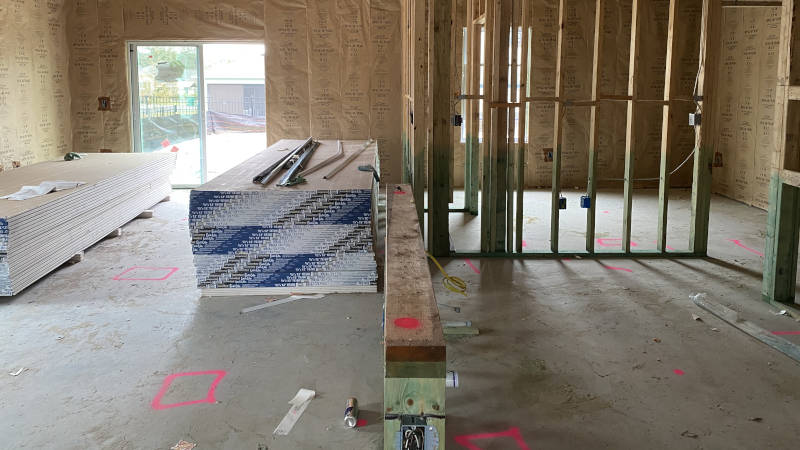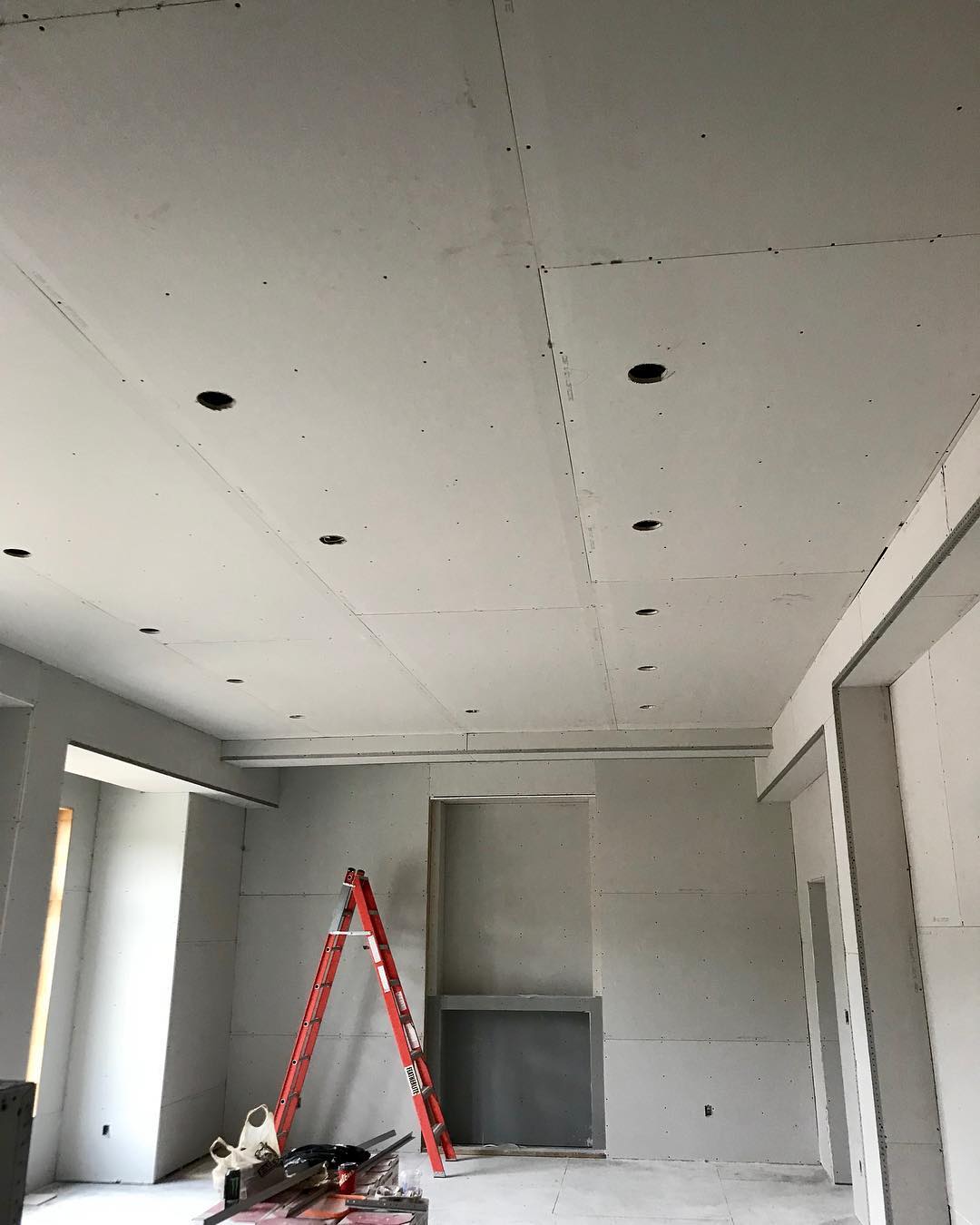Picking the Right Drywall Contractors for Your Task
Picking the Right Drywall Contractors for Your Task
Blog Article
Everything You Need to Find Out About Drywall Installation: A Comprehensive Guide

Recognizing Drywall Fundamentals
Comprehending the basics of drywall is vital for any effective installment job. Drywall, likewise referred to as gypsum board or plasterboard, is a preferred construction product utilized to create interior walls and ceilings. It contains a gypsum core sandwiched between 2 layers of paper. The plaster core offers the required strength and strength, while the paper layers shield the core from damage and provide a smooth surface for completing.
One essential element of recognizing drywall is recognizing the various types available. The most typical types include routine drywall, moisture-resistant drywall, and fire-resistant drywall. Routine drywall appropriates for the majority of indoor applications, while moisture-resistant drywall is recommended for areas with high humidity, such as bathrooms and kitchens. Fire-resistant drywall is developed to supply extra security against fire and is typically needed in industrial buildings and multi-family homes.
Another key element of drywall fundamentals is understanding the conventional dimensions and densities readily available. One of the most common sizes are 4x8 feet and 4x12 feet, with densities ranging from 1/4 inch to 5/8 inch. Thicker drywall is typically used for applications that need enhanced fire resistance or soundproofing.
Devices and Products Needed for Drywall Installation
To effectively set up drywall, it is critical to have the needed devices and materials handy (drywall Edmonton). These materials and devices are necessary for accomplishing a professional coating and making sure the toughness of the installation
Most importantly, you will require a determining tape to accurately gauge the measurements of the location where the drywall will be set up. An utility knife is important for reducing the drywall to the required dimension and shape. In addition, a drywall saw can be utilized for making much more detailed cuts, such as around windows or electrical outlets.
Next, you will certainly require a screw gun or a drill with a screwdriver little bit to protect the drywall to the wall studs. Screws, particularly drywall screws, are essential for connecting the drywall to the studs. It is essential to utilize the suitable size of screws to make sure a flush and secure installment.

In terms of products, you will certainly require the drywall itself, joint substance for completing spaces and joints, and tape for reinforcing the joints. Sandpaper or a sanding block will certainly be required for raveling the joint compound after it has actually dried out.
Preparing the Room for Drywall Installation
Prior to continuing with the drywall installment, it is vital to effectively prepare the space to guarantee a smooth and effective setup process. Preparing the space includes numerous important actions that need to be complied with faithfully.
First of all, it is essential to get rid of the location of any kind of furnishings, components, or various other items that may block the installment procedure. This will certainly give the installers with enough room to function and steer about. Furthermore, it is recommended to cover the floors and any remaining things with safety sheets or ground cloth to stop any damages or particles from dropping onto them.
Following, it is essential to check the walls and ceiling for any existing damages, such as fractures, holes, or water stains. These concerns must be repaired before the installation to ensure a smooth and even surface area for the drywall. Any type of loose paint or wallpaper should additionally be gotten rid of, and the wall surfaces must be thoroughly cleaned and cleaned.
Additionally, electric and pipes components must be shut off and safeguarded to stop any crashes or damages throughout the installation procedure. It is important to turn off the power supply to the location and remove any kind of electrical cover plates prior to starting the installment.
Finally, it is recommended to consult with a professional or describe regional building ordinance to make sure compliance with safety and security guidelines and obtain any kind of necessary authorizations before continuing with the installation. By appropriately preparing the space, you can ensure a efficient and successful drywall installation process.
Step-by-Step Overview to Hanging Drywall
To ensure an effective drywall installation, it is very important to adhere to a step-by-step overview for hanging the drywall (drywall Edmonton). This process needs accuracy and focus to information
First, gather all the necessary tools and materials, consisting of drywall sheets, an energy blade, a drywall contractors drywall saw, a tape measure, a drill, and screws.
Next, start by determining the dimensions of the wall surface or ceiling where the drywall will certainly be installed. Transfer these measurements onto the drywall sheets, marking where cuts need to be made - drywall Edmonton. Use a straight edge and an utility knife to score the drywall along the marked lines, then snap it along the score line
When the drywall sheets are cut to size, they can be hung on the wall or ceiling. Begin at one edge and place the initial sheet vertically versus the framework. Use screws to protect the drywall to the studs, ensuring to leave a tiny void in between sheets for development.
Proceed this procedure, functioning your means throughout the wall surface or ceiling. Make certain that each sheet is degree and flush with surrounding sheets. Make use of a drywall attended eliminate any type of needed openings for electric outlets or switches.
Finishing Techniques for a Professional Appearance
Currently that the drywall sheets have actually been effectively hung, it is vital to utilize completing techniques that will certainly cause a professional and sleek look. Accomplishing a remarkable and smooth coating on drywall requires cautious interest to detail and making use of correct devices and strategies. One of the primary steps in the finishing process is to fill the joints and screw imprints with joint substance. This can be done by using a thin layer of compound over the joints utilizing a taping blade, and after that embedding drywall tape into the substance. When the tape remains in place, another layer of compound need to be applied over it, feathering the sides to produce a smooth transition. After the compound has actually dried, it is very important to sand the surface to get rid of any kind of flaws and produce a seamless surface. A post sander or fining sand block can be utilized for this purpose. Last but not least, the walls should be keyed and repainted to complete the ending up process. Making use of high-grade paint and applying it equally with a roller or brush will make certain a durable and expert coating. By complying with these ending up methods, your drywall installment will certainly have a professional and refined look.
Final Thought
In verdict, recognizing the basics of drywall installation is important for an effective task. By using the proper tools and materials, preparing the space sufficiently, and adhering to a detailed overview, one can accomplish a professional-looking surface. Interest to completing strategies will certainly better boost the total look. With this detailed overview, anybody can confidently take on a drywall installment task.
The most usual types include routine drywall, moisture-resistant drywall, and fire-resistant drywall. Normal drywall is appropriate for most indoor applications, while moisture-resistant drywall is suggested for locations with high humidity, such as restrooms and cooking areas. Screws, especially drywall screws, are required for affixing the drywall to the studs. These problems need to be repaired prior to the installation to make certain a smooth and even surface area for the drywall. By following these completing strategies, your drywall setup will certainly have a specialist and polished appearance.
Report this page